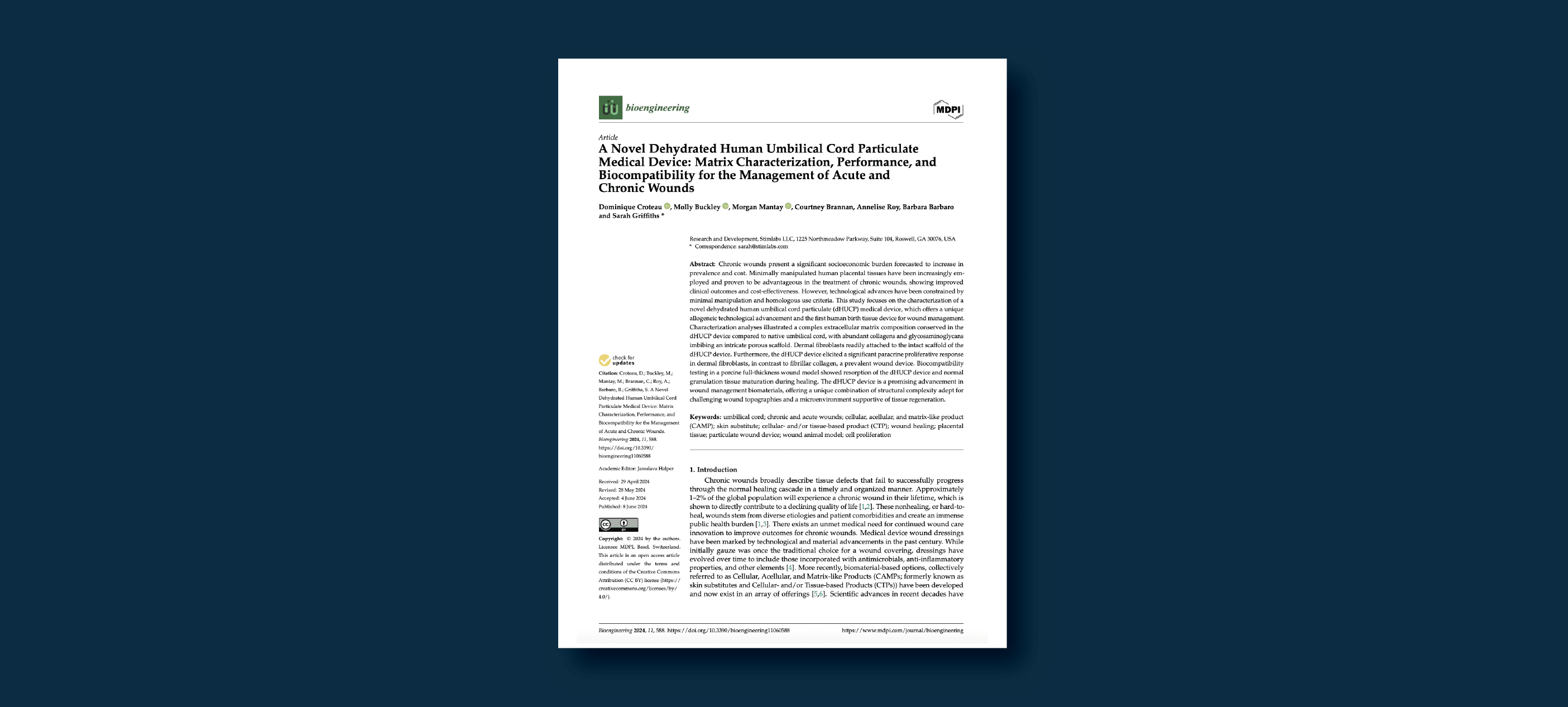Publications
A Purified Reconstituted Bilayer Matrix Shows Improved Outcomes in Treatment of Non-Healing Diabetic Foot Ulcers When Compared to the Standard of Care: Final Results and Analysis of a Prospective, Randomized, Controlled, Multi-Centre Clinical Trial
David G. Armstrong, Dennis P. Orgill, Robert D. Galiano, Paul M. Glat, Jarrod P. Kaufman, Marissa J. Carter, Lawrence A. DiDomenico, Charles M. Zelen
Abstract: As the incidence of diabetic foot ulcers (DFU) increases, better treatments that improve healing should reduce complications of these ulcers including infections and amputations. We conducted a randomized controlled trial comparing outcomes between a novel purified reconstituted bilayer membrane (PRBM) to the standard of care (SOC) in the treatment of non-healing DFUs. This study included 105 patients who were randomized to either of two treatment groups (n = 54 PRBM; n = 51 SOC) in the intent to treat (ITT) group and 80 who completed the study per protocol (PP) (n = 47 PRBM; n = 33 SOC)...
The Use of a Dehydrated Complete Human Placental Membrane Allograft for Mohs Surgical Defects of the Nose
Background: Repair options for Mohs surgical defects include primary closure, flap or graft, or healing by second intention. These options may not be optimal in all cases. A dehydrated complete human placental membrane (dCHPM) allograft may serve as an alternative repair option. Objective: To assess the aesthetic and functional outcomes of an alternative repair technique for Mohs surgical defects of the nose. Methods: Twenty patients with Mohs surgical defects of the nose repaired with a dCHPM allograft were retrospectively identified. Photographs were used to demonstrate surgical technique and outcomes. Two blinded observers evaluated final outcomes using the Patient...
Placental Tissues as Biomaterials in Regenerative Medicine
Placental tissues encompass all the tissues which support fetal development, including the placenta, placental membrane, umbilical cord, and amniotic fluid. Since the 1990s there has been renewed interest in the use of these tissues as a raw material for regenerative medicine applications. Placental tissues have been extensively studied for their potential contribution to tissue repair applications. Studies have attributed their efficacy in augmenting the healing process to the extracellular matrix scaffolds rich in collagens, glycosaminoglycans, and proteoglycans, as well as the presence of cytokines within the tissues that have been shown to stimulate re-epithelialization...
A Novel Dehydrated Human Umbilical Cord Particulate Medical Device: Matrix Characterization, Performance, and Biocompatibility for the Management of Acute and Chronic Wounds
Dominique Croteau, Molly Buckley, PhD, Morgan Mantay, Courtney Brannan, Annelise Roy, Barbara Barbaro, PhD, Sarah Griffiths, PhD
Abstract: Chronic wounds present a significant socioeconomic burden forecasted to increase in prevalence and cost. Minimally manipulated human placental tissues have been increasingly em- ployed and proven to be advantageous in the treatment of chronic wounds, showing improved clinical outcomes and cost-effectiveness. However, technological advances have been constrained by minimal manipulation and homologous use criteria. This study focuses on the characterization of a novel dehydrated human umbilical cord particulate (dHUCP) medical device, which offers a unique allogeneic technological advancement and the first human birth tissue device for wound management. Characterization analyses illustrated a complex...
Intermediate Layer Contribution in Placental Tissue
Annelise Roy & Sarah Griffiths, PhD
Placental membrane (PM) allografts are commonly used to treat chronic wounds. Native PM is composed of an amnion, chorion, and intermediate layer (IL) that contain matrix structures and regulatory components beneficial in wound healing. Historically, commercially available allografts were composed of only one or two layers of the PM. To maximize the conserved material in PM allografts, a dehydrated complete human placental membrane (dCHPM) allograft processed using the Clearify™ process was developed. Histological and proteomic characterization comparing dCHPM allografts with native PM demonstrated that the majority of matrix structures and regulatory proteins are retained in dCHPM allografts...
Use of a Purified Reconstituted Bilayer Matrix in the Management of Chronic Diabetic Foot Ulcers Improves Patient Outcomes vs Standard of Care: Results of a Prospective Randomised Controlled Multi-Centre Clinical Trial
David G. Armstrong, Dennis P. Orgill, Robert D. Galiano, Paul M. Glat, Jarrod P. Kaufman, Marissa J. Carter, Lawrence A. DiDomenico, Charles M. Zelen





















